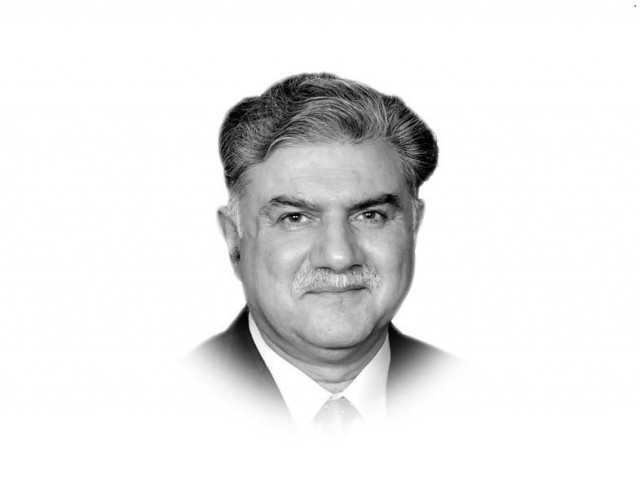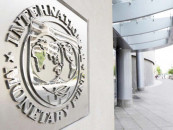Phase 1 of Russia’s Ukraine offensive — military notes
The US now claims providing Ukraine with targeting data/other relevant intelligence for the purpose

Russian military is in a relatively conventional conflict on home turf perhaps for the first time since Red Army fought an irregular war in Afghanistan. This Op-Ed tries to analyse the Phase 1 of the conflict (24 February-7 April 2022) continuing the ‘Military Notes’ published on 28 April. The second phase has commenced around 19 April, through an expanded “Eastern Assault” across a 300-mile frontage from Kharkov to Donetsk and Luhansk, with missile auxiliaries simultaneously targeting Kyiv in the north and Lviv (the Western/NATO aid hub) in Western Ukraine.
Russian offensive’s initial/first phase comprised a Northern Front, launched out of Belarus to target Kyiv; a Northeastern (NE) Front directed at the city of Kharkov (Kharkiv); a Southeastern (SE) Front within which a Southern Prong was launched from Crimea; and not a very powerful SE Prong directed at the cities within Luhansk and Donbas region/oblasts. In early April, Russian troops in southeastern Ukraine were brought under General Alexander Dvornikov. The Northern Front (after failing to invest Kyiv) and NE Front were subsequently reassigned to the SE Front (fighting in Mariupol) for Phase 2 of the offensive.
Attack against Kyiv under Northern Front comprised a Main Effort striking south from Belarus along west bank of Dnipro (Dnieper) River, to invest the city from the west. The Secondary Effort, along east bank of Dnipro, was to encircle Kyiv from northeast and east. Russian Airborne Forces assaulted on 26 February to seize two key airfields around Kyiv, one of them near Vasylkiv Air Base, south of Kyiv. The airborne assaults had mixed results. Spetsnaz forces were infiltrated in Kyiv to link-up with airborne forces and mechanized advance from the north.
The Front had to pass through the radio-actively contaminated ghost towns of Chernobyl and the legendary tough terrain of Pripyat (Pripyat Marshes). Ukraine resorted to partial inundation of the area to impede Russian forces, held up at Ivankiv, a northern suburb of Kyiv. By early March, the reportedly 64-kilometer-long convoy had made little progress. The Secondary Effort along the Chernihiv (Kyiv Oblast) was also held up after partial siege of the Chernihiv city.
This entire Effort stalled by 20 March due to armour unable to fan out astride the few roads owing to forests, waterways and what was called the dreaded ‘General Mud’ in World War-II; besides, Russian supply constraints due to long and vulnerable lines of communications (logistics) and dogged resistance by Ukrainian tank hunting parties. Western military analysts also cite Russian failure to low morale among Russian troops (most having some degree of affinity towards fellow Ukrainians), poor performance of Russian equipment and failure of Russian Air Force to provide air cover and favourable air situation. Russian attrition in encirclement battles was also high. On 16 March, remaining Ukrainian forces mounted a counter-offensive with partial success. The Effort, designed for a quick victory, was fully retracted by 7 April for resupply and redeployment as mentioned. Thereafter, Russian forces relied upon stand-off weapons including artillery, rocket barrages and missile strikes.
There were attempts – reportedly – to assassinate President Zelenskyy, using Chechen fighters and Wagner Group mercenaries, but suspected tipping by anti-war officials within Russia’s Federal Security Service (FSB) thwarted these plans.
The NE Front was able to capture Konotop city/other towns (Chernihiv Oblast) and Sumy city (Sumy Oblast) on 24 February. Although Sumy Axis threatened Kyiv from east due to terrain favourable for mechanised operations, NE Front did not press the attack, as it was then depleted by siege warfare. The Front subsequently withdrew by 7 April.
The Eastern Front meanwhile on 1 March, after relatively unimpeded advance, bombed and invested Kharkov City, some 35 kilometers from Russian border. Ukrainian Forces offered stiff resistance and attacked Millerovo air base (Rostov Oblast, Russia) on 25 February using OTR-21 Tochka missiles. On 17 March, Russia captured Izium City (Kharkov Oblast, eastern Ukraine). However, battle for the badly damaged, predominantly Russian speaking Kharkov still rages. Ukrainian government had ordered remaining residents to evacuate west.
Along Southern Front, on 24 February, Russian forces took control of the North Crimean Canal, supplying Dnieper water to Crimea, cut off since 2014. Mariupol was besieged on 26 February simultaneously linking the Front with separatist-held Donbas region. On 1 March, Russian forces resumed their attack on Melitopol, which was later taken. On 25 February, Russian Navy undertook an amphibious assault ashore the Sea of Azov on 70-kilometer-long coastline, west of Mariupol for expected deployment of marines. A second pincer including 22nd Army Corps developed operation north from Crimea capturing the Zaporizhzhia Nuclear Power Plant by 4 March. A third prong from Crimea moved northwest towards Kherson and captured the city, the first major Ukrainian city to fall. Mariupol completely encircled by 18 March fell later during Phase 2.
Along Western Ukraine on 14 March (Phase I), Russian forces conducted multiple cruise missile strikes over a military training facility in Yavoriv (Lviv Oblast), close to the Polish border. The missile attack was later expanded to the Lviv oblast. Intelligence suggested that these cruise missiles were likely air-launched from warplanes flying over Black Sea.
In air warfare, Russian Air Force (RAF) attacked Chuhuiv air base on the very first day of their operations; the base housing the Turkish supplied Bayraktar TB2 tactical drones. Thereafter, there were continuing attacks on multiple other Ukrainian air bases. Russia’s initial SEAD (Suppression of Enemy Air Defence) operation had caused extensive damage to many Ukrainian air defence facilities, runways, Radar Systems etc. Russia had reportedly used the newly inducted 9K720 ‘Iskander’ missile systems, fired from Belarus on 27 February, against Zhytomyr Airport in Western Ukraine.
The aircraft losses on both sides are, interestingly, almost equal around 55. Russia still has good inventory of fighter jets and helicopters available near Ukraine.
RAF’s relatively poor performance in providing favorable air situation for ground operations and its subdued ‘offensive air support’ is attributed to shortage of precision-guided bombs and relative inexperience of Russian pilots for the kind of support; besides Ukrainian surface-to-air missile (SAM) batteries. Ukrainian mid-range SAMs compel RAF pilots to fly low, making them vulnerable to Stinger/other shoulder-fired missiles. So far US/NATO has resisted the Ukrainian demand of establishing a ‘No Fly Zone’ over Ukraine for fear of direct confrontation with Russia.
In Naval Warfare, Turkey invoked the 1936 Montreux Convention, denying passage to four Russian naval vessels through the Turkish-held Bosphorus and Dardanelles straits, as the warships were not registered with Black Sea bases as home. Russian Navy shelled and occupied the Snake Island and captured about a dozen Ukrainian ships in Berdiansk (a port city in the Zaporizhzhia Oblast in SE Ukraine), including the Polnocny-class landing ship Yuri Olefirenko. On 13 April, Russian cruiser Moskva, the flagship of its Black Sea Fleet, was sunk under controversial circumstances. The US now claims providing Ukraine with targeting data/other relevant intelligence for the purpose.
The story of the ‘Eastern Assault’ in Phase 2 next week.
Published in The Express Tribune, May 12th, 2022.
Like Opinion & Editorial on Facebook, follow @ETOpEd on Twitter to receive all updates on all our daily pieces.
















COMMENTS
Comments are moderated and generally will be posted if they are on-topic and not abusive.
For more information, please see our Comments FAQ